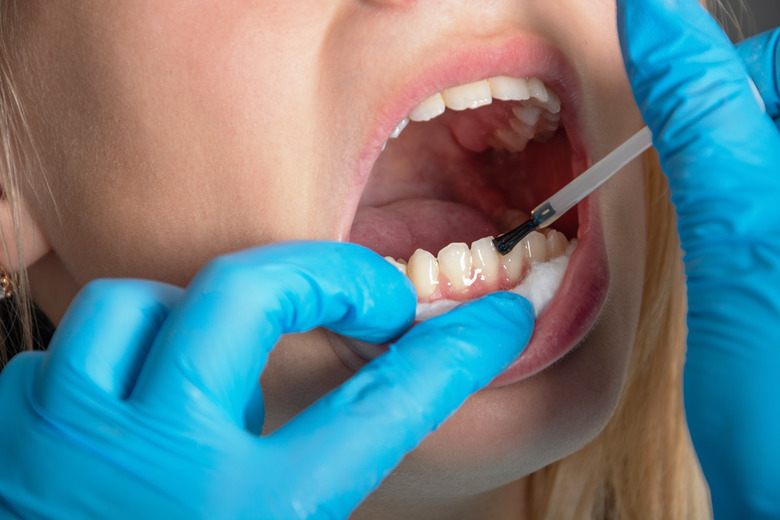Good News! Tooth Regeneration Could Replace Fillings
If you dread going to the dentist and live in fear of getting a cavity, new research should give you hope. Scientists at Zhejiang University and Xiamen University in China have created a gel that regrows tooth enamel, which could mean the end of needing fillings for cavities.
Tooth Decay and Fillings
Tooth
Decay and Fillings
Tooth decay, also called dental caries, is a common problem for adults and children. According to the National Health and Nutrition Examination Survey (NHANES), 92 percent of adults between the ages of 20 and 64 have a history of dental caries, and 26 percent of them have untreated tooth decay.
The American Dental Association (ADA) explains that decay destroys the enamel or the hard, outer layer of your teeth. Enamel, the hardest tissue in your body, can't repair itself because it doesn't have any living cells. Bacteria that form on your teeth can damage the enamel by making acids, so cavities appear. The ADA adds that "cavities are more common among children, but changes that occur with aging make cavities an adult problem, too."
Today, fillings are a common way to treat tooth cavities. After removing the decay, a dentist can fill in the cavity with composite resins, amalgam, gold or other materials. However, many people are afraid of this process because it may involve a drill and possible pain.
A New Gel for Tooth Enamel
A New Gel
for Tooth Enamel
Researchers at Zhejiang University and Xiamen University made a gel from calcium phosphate ion clusters. Calcium and phosphate exist in enamel, so the scientists wanted to mimic the natural ions. After applying their gel to teeth with enamel damage, they left the material on for 48 hours. Under a microscope, they saw a thin coating had formed on the surface of the teeth.
The thin coating was similar to natural enamel, and researchers believe that adding extra layers of the gel could make it thicker and stronger. They plan to test their gel on mice and eventually on humans. So it may be a while before you will see the gel in a dentist's office.
Regrowing Tooth Enamel
Regrowing
Tooth Enamel
The idea of being able to spread a thin gel on a cavity and watching the enamel regenerate appeals to patients and dentists. Not only would it be easier, but it also may be faster, less painful and less expensive. Imagine having a simple, pain-free gel treatment instead of a filling.
The gel could also be used to help strengthen tooth enamel before a cavity starts. Since the initial study shows it creates a thin layer, this may be enough to regrow the enamel and prevent tooth decay in weakened teeth that need remineralization.
Other researchers, including USC dental professor Janet Moradian-Oldak, who is working on a hydrogel with amelogenin peptides, have proposed regrowing tooth enamel.
"You would still need to go to the dentist. But the most important implication is really preventing deep decay by addressing lesions early, to rebuild the lost enamel," Moradian-Oldak told the Herman Ostrow School of Dentistry of USC.
Minimally Invasive Treatments
Minimally
Invasive Treatments
Creating a gel to regrow tooth enamel is part of a growing trend of minimally invasive treatments in dentistry and the entire medical field. Patients want faster and easier solutions that are pain-free. Minimally invasive treatments can also be cheaper, less traumatic and have a quicker recovery time. Health care professionals also benefit from being able to give patients more options, which means they're more likely to follow through with treatment.
Cite This Article
MLA
Bandoim, Lana. "Good News! Tooth Regeneration Could Replace Fillings" sciencing.com, https://www.sciencing.com/tooth-regeneration-replacing-fillings-13721469/. 9 September 2019.
APA
Bandoim, Lana. (2019, September 9). Good News! Tooth Regeneration Could Replace Fillings. sciencing.com. Retrieved from https://www.sciencing.com/tooth-regeneration-replacing-fillings-13721469/
Chicago
Bandoim, Lana. Good News! Tooth Regeneration Could Replace Fillings last modified March 24, 2022. https://www.sciencing.com/tooth-regeneration-replacing-fillings-13721469/
